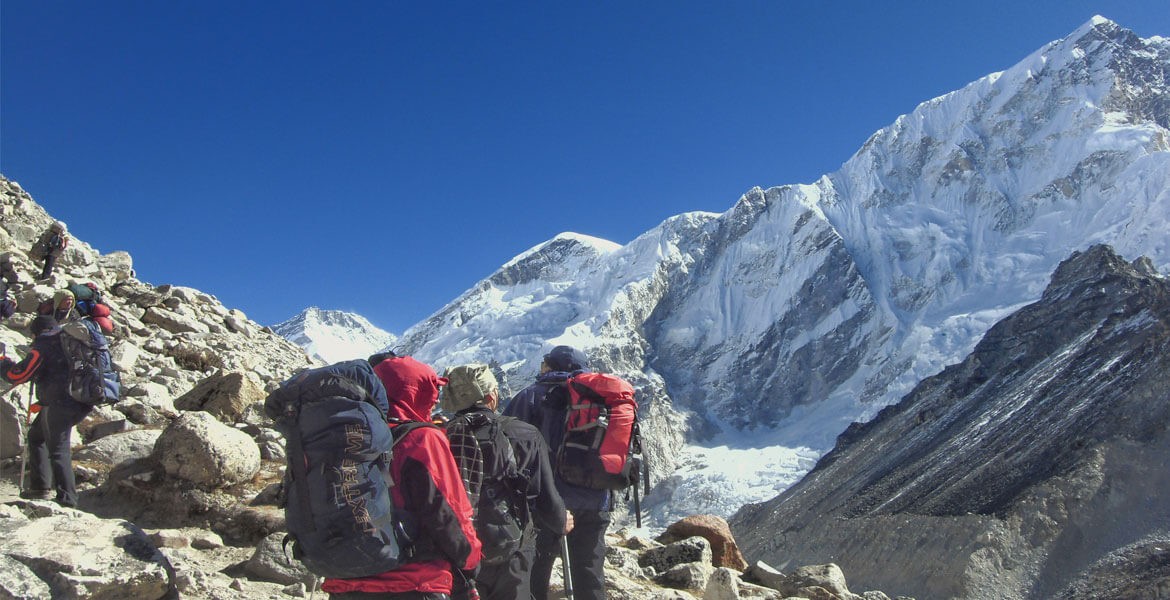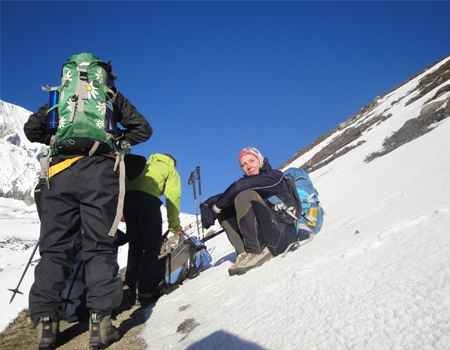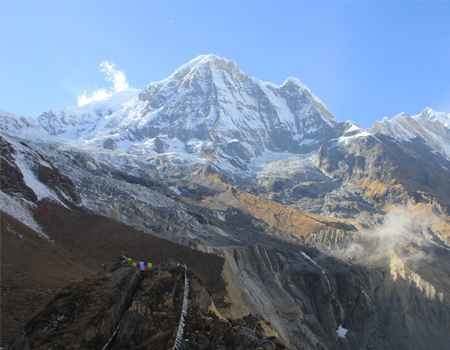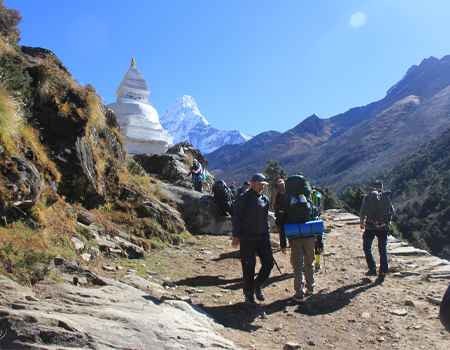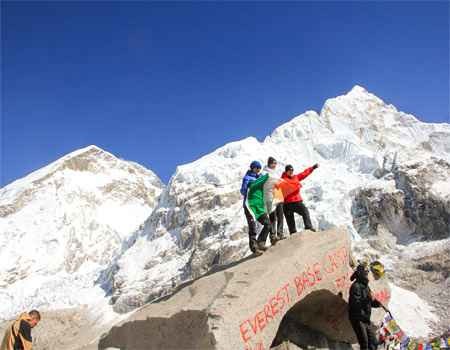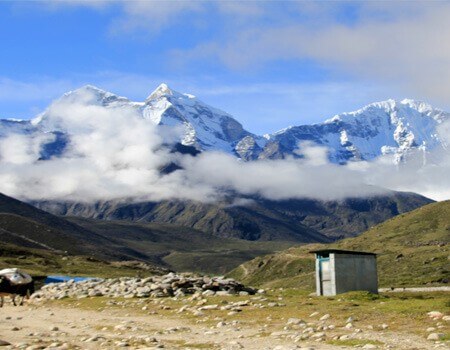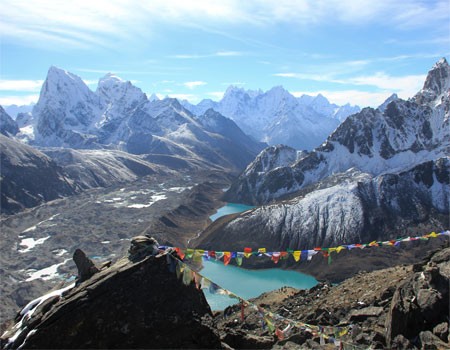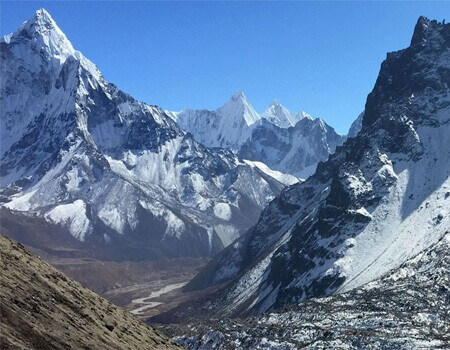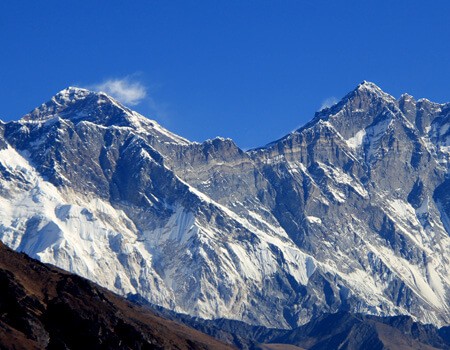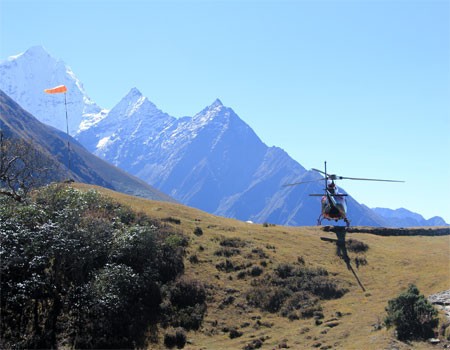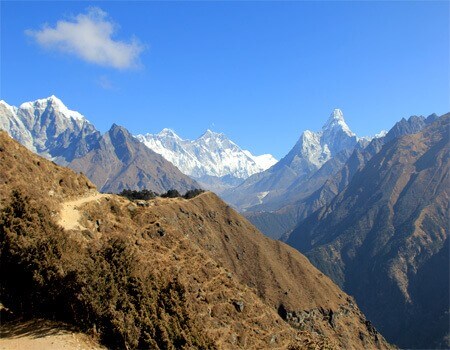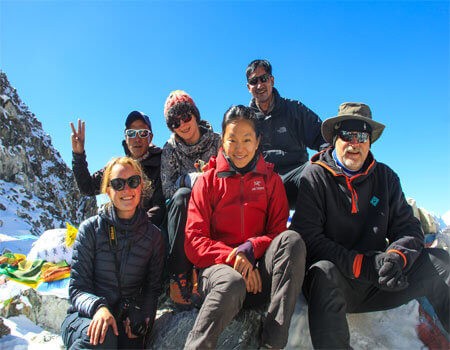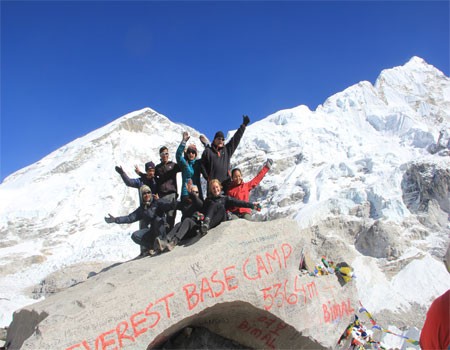October is the center of autumn in Nepal, marking one of the most breathtaking times for mountain trekking in the country. If you plan to trek to the Everest Base Camp (Erek in October, it is an ideal month. With moderate temperatures, stable weather, stunning vistas, and rich festival celebrations, this period offers a truly magical Himalayan adventure.
Why Choose October for Everest Base Camp?
Best Weather Conditions
Due to clear skies and favourable weather conditions, October is one of the best months to trek to Everest Base Camp. The summer monsoon has just ended, leaving the air fresh and the landscape vibrant. Rainfall is virtually absent, meaning trails are dry, mountain views are unobstructed, and the chance of flight disruptions to Lukla is minimal. The days are bright and sunny, providing perfect conditions for both trekking and photography. Nights can be chilly yet tolerable for most trekkers with proper gear.
Spectacular Himalayan Views
As autumn unfolds, the Everest region unveils its panoramic glory. The skies are blue and bright, with a view of giant mountains such as Everest, Lhotse, Nuptse, Ama Dablam, and more. While you will be flying to Lukla from Kathmandu, you’re treated to sweeping views of mountain ranges including Ganesh Himal, Langtang, Gaurishankar, and the Tibetan massif. Throughout the journey, vistas remain unclouded, allowing for awe-inspiring moments of sunrise and sunset.
Vibrant Trekking Community
October marks the peak season for trekking in the Everest region. Adventurers from all over the world come to hike on the Everest trails, creating a lively atmosphere that is a fantastic opportunity to swap stories, make friends, and enjoy the shared camaraderie that comes from pursuing a common goal. Whether you’re pausing in a teahouse or sharing a meal, these interactions can be some of your trip’s fondest memories.
Festival Celebrations in the Everest Region
The timing of your trek also allows you to witness or participate in Nepal’s most significant cultural festivals. The Hindu festival of Dashain—celebrated as the victory of Goddess Durga—and the luminous Tihar, also known as Diwali, coincide with October. Villages and cities radiate with color and light, and trekkers are welcome to join in traditional songs, dances, and celebrations.
Suppose you are trekking in October in the Everest Region. In that case, you will have the opportunity to participate in the Buddhist Festival Mani Rimdu, held in Tengboche, which draws both monks and visitors for vibrant rituals, masked dances, and community gatherings in the shadow of the mountains. Experiencing these festivals adds a unique, authentic layer to your trekking journey.
Highlights of Trekking in October
- Safe and Enjoyable Trails: With dry weather, the paths are sturdy and secure, not slippery from recent rains or snow.
- Temperature Comfort: Daytime temperatures are pleasant, typically ranging significantly above freezing. However, evenings and early mornings require warm clothing, as temperatures can drop to between 2°C and -5°C at higher altitudes.
- Reduced Risk of Delayed Flights: The reliable weather means flights to Lukla rarely face interruptions, ensuring your itinerary stays on track and providing breathtaking aerial views during your journey.
- Rich Flora and Fauna: Post-monsoon, the forests are lush, waterfalls sparkle, and wildlife can often be spotted along quieter stretches of the trail.
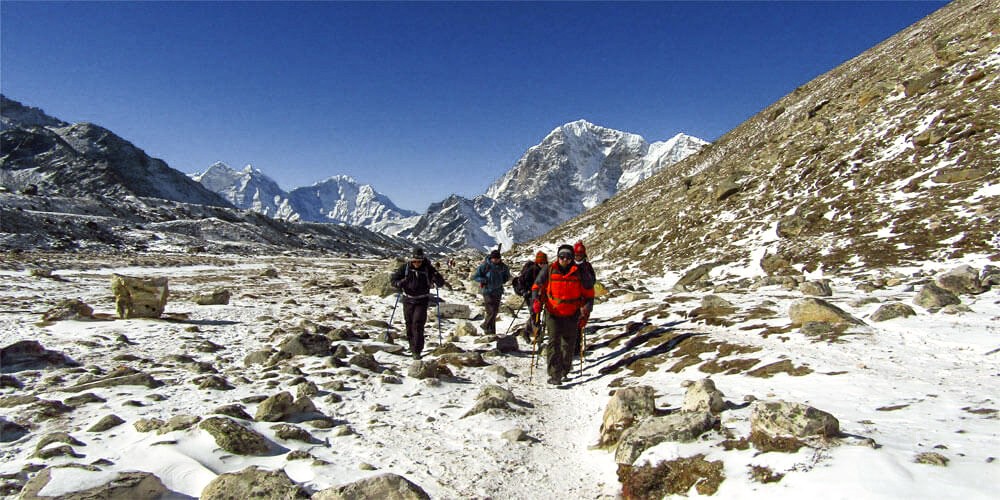
Trekkers on the Everest Base Camp Trail
Potential Challenges of October Trekking
Besides the many advantages, some challenges can occur in October:
Altitude Sickness
Coping with the increasing elevation remains a primary concern. Although October doesn’t increase the likelihood of Acute Mountain Sickness (AMS) compared to other months, the high volume of trekkers sometimes causes people to rush, skipping vital acclimatization. Pay close attention to your body: ascend slowly, take acclimatization days (especially in Namche Bazaar and Dingboche), and stay hydrated. If you experience symptoms such as headache, nausea, or dizziness, do not ascend further—rest or descend until you recover.
Trail Congestion
October’s popularity means busier trails and crowded lodges. Suspension bridges and narrow paths can have queues, especially during midday. Porters, yaks, mules, and trekkers all share the route, making patience and alertness crucial. Crossing bridges or encountering animal caravans may extend daily walking times.
Flight and Accommodation Bookings
Due to high demand, flights to and from Lukla sell out well in advance. Secure your tickets as early as possible. Similarly, while most stops along the route—such as Namche and Dingboche—have ample guesthouses, popular rest points like Tengboche, Lobuche, and Gorakshep may lack vacancy if you arrive late in the day. Bookings or starting your trek early each morning can alleviate these challenges.
Managing Difficulties on the Everest Base Camp Trek
- Prevent Altitude Sickness: Trek slowly, stay hydrated, rest well, and consider prophylactic medication (such as acetazolamide) with a doctor’s advice. Don’t be afraid to rest an extra day or descend if feeling unwell.
- Navigating Crowded Trails: Allow animals and porters the right of way, especially on narrow paths or bridges. Start trekking early to avoid peak foot traffic and make the most of your daylight hours.
- Book in Advance: Arrange Lukla flights and accommodations as soon as possible, especially in the busiest stops. Inform your lodge if you expect to arrive late due to unforeseen circumstances.
- Prepare for Temperature Variations: Bring warm layers, a down jacket, gloves, and a hat for cold nights and mornings. Day temperatures are usually mild and comfortable.
- Safety Precautions: Remain vigilant in areas with steep, rocky, or cliffside sections. Pause for photographs in secure spots only, and be wary of falling rocks or debris caused by animal movement above the trail.
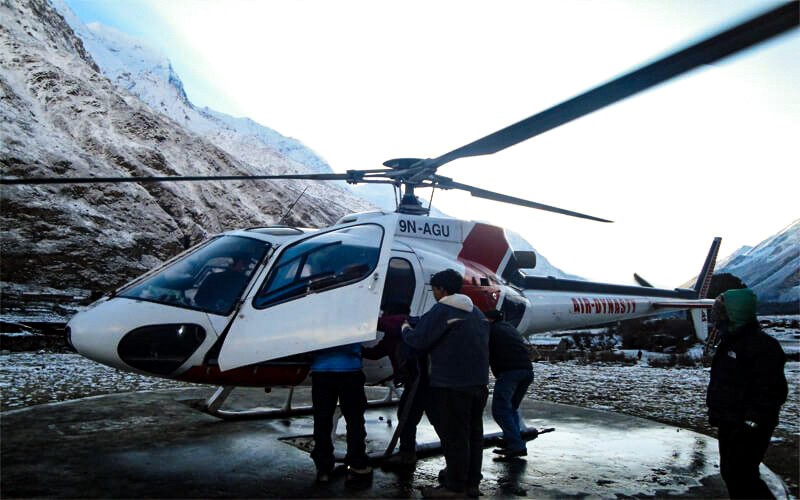
Altitude rescue from the mountain
Alternative Trekking and Activities in the Everest Region
October isn’t just perfect for the classic Everest Base Camp trek. Several rewarding alternatives are available:
Gokyo Lake Trek
For trekkers desiring fewer crowds, the Gokyo Lake Trek mirrors EBC in duration. Still, it takes you through the pristine, shimmering turquoise lakes of Gokyo Valley. Ascending Gokyo Ri yields some of the best panoramic views of Everest and its neighboring peaks.
Everest View Trek
If time or fitness is limited, the Everest View Trek offers a condensed experience. Within a week, you can enjoy jaw-dropping Himalayan vistas and Sherpa culture without reaching base camp itself. This route is ideal for families or those seeking a gentler adventure.
Three Passes Trek
For advanced trekkers seeking thrill and challenge, the Everest High Passes Trek (also known as the Three Passes Trek) traverses the Kongma La, Cho La, and Renjo La passes. This route covers the highlights of the Khumbu region—Everest Base Camp, Gokyo Lakes, and secluded valleys—demanding strong fitness and stamina.
Luxury Lodging and Helicopter Options
For those preferring more comfort or short on time, consider flying back to Kathmandu via helicopter after reaching Base Camp. Alternatively, the Everest Base Camp Helicopter Tour offers breathtaking aerial views and short landings at key points, all within a single day—an excellent option for those seeking a luxury experience or time-crunched visitors.
Cultural and Leisure Activities Beyond Trekking
If your journey affords extra days, enrich your Nepal experience with side trips:
- Kathmandu Valley Heritage Tours: Discover the ancient marvels of Kathmandu, Bhaktapur, Patan, Dakshinkali, and Bungmati-Khokana. Explore grand stupas, intricate temples, and vibrant street life.
- Hiking Around Kathmandu: Short pre-trek hikes in the hills around the capital help acclimatize and shake off travel fatigue.
- Chitwan Jungle Safari: After the rigors of the EBC trek, unwind in Chitwan National Park—Nepal’s wildlife haven. Jeep safaris, canoe rides, and jungle walks offer immersive encounters with rhinos, elephants, and exotic birds.
Typical Weather and Temperatures in October
Expect steady, pleasant days (10°C–15°C at lower altitudes, slightly cooler above Namche) with intense sunshine—high SPF sunscreen and sunglasses are must-haves. Evenings can get cold, especially above 4,000m, dipping as low as -5°C. The weather in the Himalayas is notoriously unpredictable, so a four-season layering system is highly recommended.
We have another blog post detailing the weather and temperatures of the Everest Base Camp trek, broken down by different seasons and specific months. We suggest reading that one for more information:
Tips for a Successful October Trek
- Pack Smart: Bring versatile, layered clothing, quality trekking boots, a sleeping bag rated to at least -10°C, and rain- or wind-proof gear for occasional changes in weather, as suggested in our packing list for the Everest Base Camp trek.
- Stay Healthy: Consume well-cooked meals, drink purified water, and limit your alcohol intake. Carry basic medications and a first-aid kit.
- Respect Local Culture: Dress modestly, ask permission before photographing people, and learn basic Nepali greetings to foster warm encounters.
- Environmentally Conscious: Carry reusable water bottles, avoid single-use plastics, and always follow Leave No Trace principles.
Conclusion
October is arguably the most rewarding time to experience the Everest Base Camp trek, as it combines dazzling weather, a vibrant social atmosphere, and the opportunity to immerse yourself in Nepal’s time-honored festivals. As long as you’re prepared for popularity on the trail and book logistics in advance, your journey promises clarity of mind, awe-inspiring landscapes, and memories you’ll treasure for a lifetime.
Whether following the classic path, opting for a unique variation, or indulging in a luxury helicopter return, October will reveal Everest and the Khumbu in their very best light. If you’re ready for the adventure, now is the perfect time to go.
